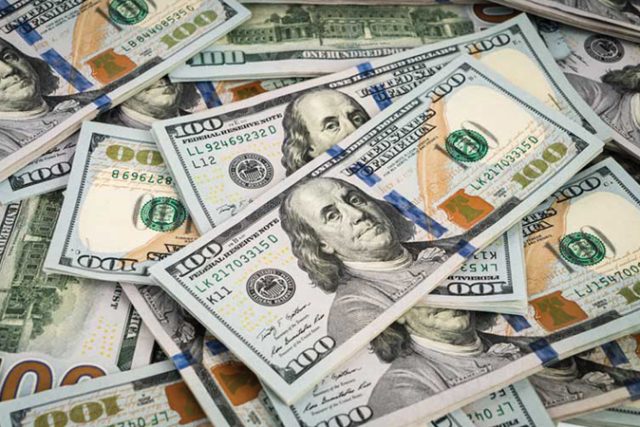Government debt nears P11 trillion as of April

Beatrice M. Laforga, Reporter
THE National Government’s outstanding debt inched closer to P11 trillion as of end-April after tapping the international debt market twice that month, the Bureau of the Treasury (BTr) reported.
Preliminary data showed the debt pile rose 2% to P10.991 trillion in April, from P10.77 trillion in the period ending March after the BTr issued more government securities here and abroad. The month’s debt tally was 27.8% higher year on year from P8.6 trillion as of April 2020.
Around P1.196 trillion was added to the debt stock so far this year, up 12% from the P9.795 trillion at the start of 2021.
Of the total, 71% of the debt portfolio were from domestic lenders while 29% were from external sources.
The local debt stock reached P7.812 trillion as of April, a tad higher than the P7.74-trillion level in March, and 33% bigger than the P5.863-trillion debt pile as of April 2020.
This was after more government securities were issued in April, bringing the total 0.9% higher to P7.271 trillion in April from P7.204 trillion in March.
Outstanding loans remained unchanged that month with P540 billion in advances from the Bangko Sentral ng Pilipinas and P156 million from other domestic borrowings. Assumed loans stood at P792 million.
Meanwhile, the outstanding external debt of the government grew by 4.9% to P3.179 trillion as of April from P3.029 trillion in March, mainly because of the two global bond issuances. Year on year, the tally climbed by 16.2% from P2.737 trillion in the same period last year.
Overall debt securities went up by 8.3% from the month before to P1.798 trillion. Euro-denominated bonds more than doubled to P234.64 billion as of April from P111.3 billion in March, after the Treasury raised P122 billion from a triple-tranche sale of euro bonds.
Total Japanese yen-denominated bonds also increased by 23% to P132.7 billion that month following the P24 billion it raised in three-year Samurai bonds.
The rest of the debt stock consisted of dollar-denominated global bonds (P113.136 billion), peso global bonds (P85.57 billion) and Chinese yuan-denominated notes (P18.6 billion).
Outstanding loans also inched up by 1% to P1.38 trillion after new loans worth P163 billion were obtained in April.
Guaranteed debt stock, meanwhile, went down by 0.2% to P434.74 billion as of April from P435.8 billion in March due to the net redemption of P750 million in local guaranteed obligations and P80 million in foreign guarantees. Year on year, this fell by 9% from P477.68 million.
Domestic guaranteed debt dipped by 0.3% month on month to P238.53 billion, while those owed to foreign lenders likewise slipped by 0.2% to P196.2 billion.
“Local-currency exchange rate fluctuations further lowered the peso value of external guaranteed debt by P1.57 billion while third-currency appreciation added P1.33 billion to the peso value of guarantees,” the BTr added.
A net redemption occurs when the Treasury pays back more debt than the new loans it obtains during the period.
The ballooning debt showed the need for the government to increase its borrowings to plug the widening budget gap, said Rizal Commercial Banking Corp. (RCBC) Chief Economist Michael L. Ricafort in a note on Thursday,
“The need to finance the purchase of more COVID-19 (coronavirus disease 2019) vaccines would also lead to some pick up in government borrowings/debt; as the commercial purchases for COVID-19 vaccines would be recurring in nature in the foreseeable future,” Mr. Ricafort said.
He said the country’s debt-to-GDP ratio could remain within the global threshold of 60% if the economy recovers in the coming months. He said this could give the state more room to hike spending, budget deficit and the debt pile to boost the economy.
The budget deficit shrank to P44.4 billion in April compared with the P274-billion fiscal gap a year ago, largely due to base effects. This brought the four-month deficit to P365.9 billion.
Official estimates showed the government’s debt stock could rise to P11.98 trillion by end-2021.
